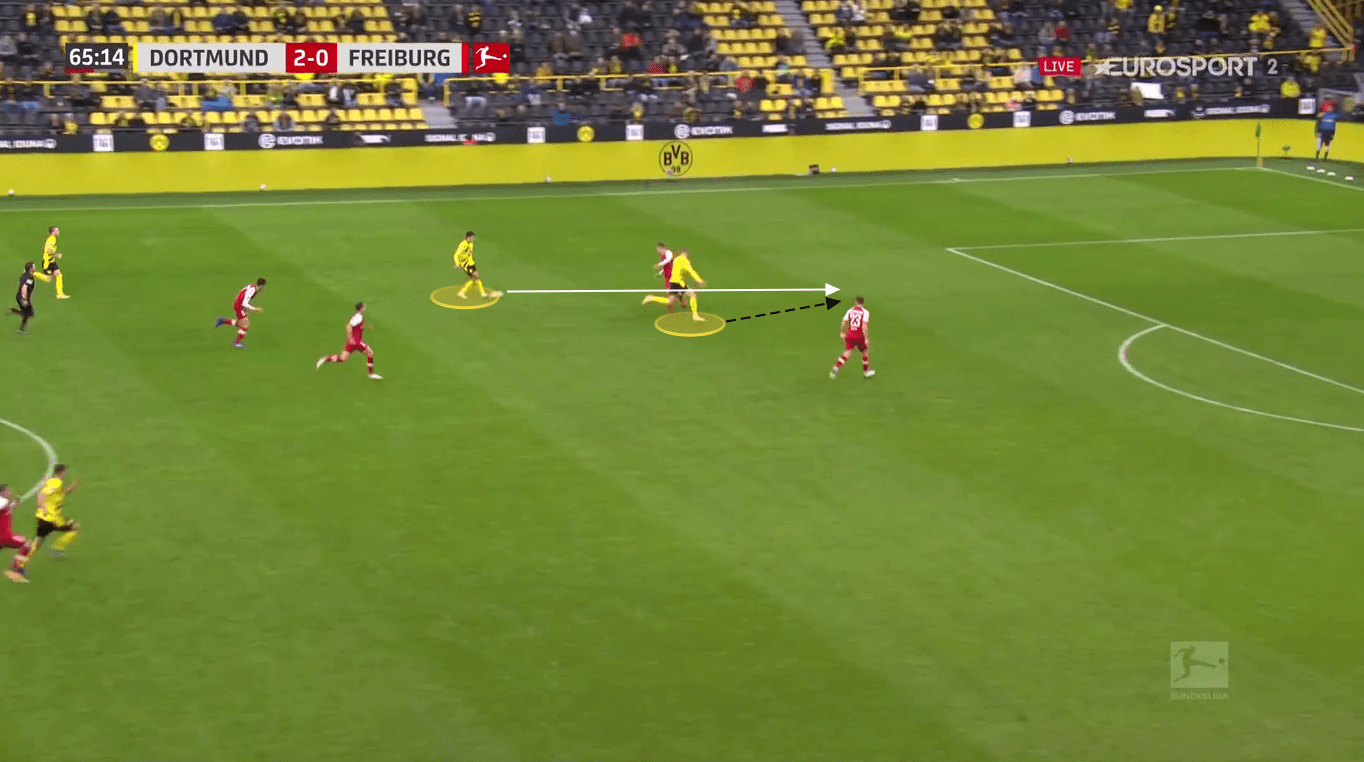It is one of the most exciting and electrizing matches in world football: Borussia Dortmund against FC Bayern Munich. On Saturday, the German “Klassiker” will start at 6:30 pm MET in the Signal Iduna Park. Both teams started quite good in the new Bundesliga season as they both won 5 matches and lost one. While Dortmund conceded the less amount of goals (2 in 6 matches), Bayern scored the most (24 in 6 matches). So, the best defence will face the most dangerous offence in Germany´s top football. The team that will win the match and get the three points makes a big step to win the league. It is probably the most interesting match his weekend in world football even with Liverpool facing Manchester City.
This tactical analysis will look at both sides’ attacking and defending tactics, all with the aim of finding their strengths and weaknesses. The analysis will also look at which line-ups both sides could use.
Line-ups

Bayern´s chip-balls
FC Bayern are likely to have possession most of the time as it is their claim to dominate their opponents even in away matches. They always try to open up space in the opponent´s defensive line by playing horizontal passes. However, at some point, a chip-ball is suddenly played in behind the opponent´s defensive lines. With the pace of Bayern´s wingers, these passes are very dangerous and lead to a goal-scoring opportunity if they are played successfully. Mostly, Joshua Kimmich has the task and the ability to play these well-timed chip-balls.
Therefore, Kimmich often drops deep in between the centre-backs to get the ball in the build-up and then, overplays the opponent’s whole team as you can see below.

In the following image, you can see another situation in that Kimmich chips the ball in behind the opponent´s defence.

Dortmund´s defensive line
Borussia Dortmund is normally known for ball possession-based football under Lucien Favre. However, in this match, Bayern is likely to dominate the match. With Bayern in possession, Dortmund will play without their typical high-staying backline.
Instead of that, they will drop very deep with the attacking line in their own half. This is a procedure that should prevent Bayern to play their typical chip-balls and we already saw Bayern struggling against this playing style in the German Super Cup some weeks ago.
In the image, we can see how Dortmund tightened up space in their own half in the Super Cup final. This compact shape reduced Bayern´s creativity and lead to a balanced match.

However, it will be important for Dortmund not to drop too deep in the own half. If they do so, the distance between the backline and the attacking line will be too big and Bayern will get space in central areas on the pitch. From these areas, Kimmich will be able to play his dangerous chip-balls again.
In the next image, Dortmund´s backline stays very deep while Erling Haaland still covers the midfield area. Between Dortmund´s midfield line and Haaland is too much space where Bayern can build-up their attack.

Wing-play as key
Bayern´s biggest advantage is the sprint ability of their wingers. With Serge Gnabry, Leroy Sané, Douglas Costa, Kingsley Coman and Jamal Musiala, Hansi Flick has five extremely dangerous wingers that have good abilities in terms of pace and dribbling. While Dortmund is struggling with injuries in their defence, Favre will need to line-up Thomas Meunier on the right and Raphael Guerreiro on the left side. Both players are rather offensive orientated and lack pace. In these defensive 1-vs.-1 situations, Dortmund will face problems.
Counter-attacks as opportunity
By closing up space in a compact defensive shape, Dortmund will need to react quickly in offensive transitions. With Giovanni Reyna, Jadon Sancho, Haaland and Thorgan Hazard, Dortmund have lots of quality players that can make a difference. Thanks to their pace and dribbling abilities, Dortmund´s offensive players excel in counter-attacking situations.
In the image below, we can see a perfect-played offensive transition from Dortmund in their home match against SC Freiburg. After intercepting a pass in midfield, Dortmund was quick in their transition. Reyna proved his outstanding dribbling ability and then played a perfect pass. Haaland was able to overrun the defensive line and scored another goal for the 3:0.

With Lucas Hernandez, Flick will line up a very offensive thinking left-back. On the right side, Benjamin Pavard is likely to get the spot in the starting eleven. Pavard is not known for his pace and will face problems in these situations.
Conclusion
It is the biggest match in German football. Like nearly every year, it is impossible to see any big advantages for any of the two clubs. In the end, individual performances and carelessness could decide the German “Klassiker” in a tight and exciting match.




Comments